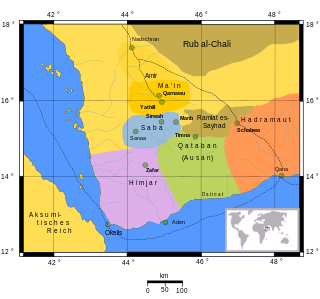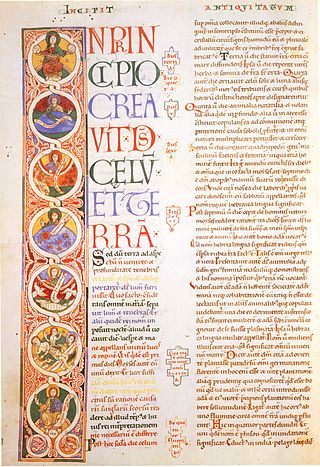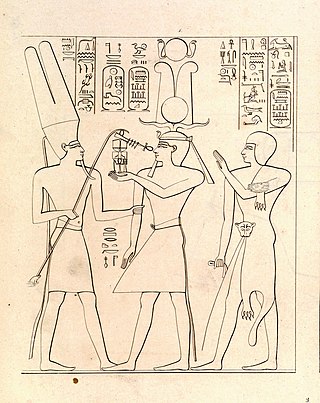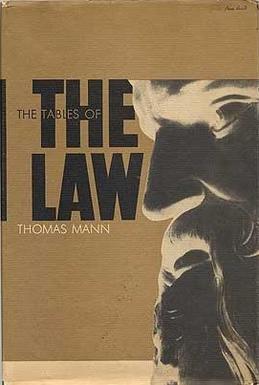The Book of Exodus is the second book of the Bible. It is a narrative of the Exodus, the origin myth of the Israelites leaving slavery in Biblical Egypt through the strength of their deity named Yahweh, who according to the story chose them as his people. The Israelites then journey with the legendary prophet Moses to Mount Sinai, where Yahweh gives the Ten Commandments and they enter into a covenant with Yahweh, who promises to make them a "holy nation, and a kingdom of priests" on condition of their faithfulness. He gives them their laws and instructions to build the Tabernacle, the means by which he will come from heaven and dwell with them and lead them in a holy war to conquer Canaan, which has earlier, according to the myth of Genesis, been promised to the "seed" of Abraham, the legendary patriarch of the Israelites.

In Abrahamic religions, Moses was a prophet who led the Israelites out of slavery in the Exodus. He is considered the most important prophet in Judaism and Samaritanism, and one of the most important prophets in Christianity, Islam, the Baháʼí Faith, and other Abrahamic religions. According to both the Bible and the Quran, God dictated the Mosaic Law to Moses, which he wrote down in the five books of the Torah.

Aaron's rod refers to any of the walking sticks carried by Moses' brother, Aaron, in the Torah. The Bible tells how, along with Moses's rod, Aaron's rod was endowed with miraculous power during the Plagues of Egypt that preceded the Exodus. Later, his rod miraculously sprouted blossoms and almonds to symbolize God's choice of Aaron and his tribe for holy service.

The Kingdom of Sheba, also known as the Kingdom of Saba, was an ancient kingdom mentioned in the Hebrew Bible and Quran. It particularly features in the tradition of Orthodox Tewahedo in today's Yemen and is also asserted as the home of the Queen of Sheba, who is left unnamed in Jewish texts but is known as Makeda in Ethiopian texts and as Bilqīs in Arabic texts. According to the Jewish historian Josephus, Sheba was the home of Princess Tharbis, who is said to have been the wife of Moses before he married Zipporah.

Sefer haYashar is a medieval Hebrew midrash, also known as the Toledot Adam and Divrei haYamim heArukh. The Hebrew title "Sefer haYashar" might be translated as the "Book of Righteousness". but it is known in English translation mostly as The Book of Jasher following English tradition. Its author is unknown.

Zipporah is mentioned in the Book of Exodus as the wife of Moses, and the daughter of Jethro, the priest and prince of Midian.

Miriam is described in the Hebrew Bible as the daughter of Amram and Jochebed, and the older sister of Moses and Aaron. She was a prophetess and first appears in the Book of Exodus.

According to the Bible, Jochebed was a daughter of Levi and mother of Miriam, Aaron and Moses. She was the wife of Amram, as well as his aunt. No details are given concerning her life. According to Jewish legend, she is buried in the Tomb of the Matriarchs, in Tiberias. In the New Testament, she is praised for her faith in God.
Cush or Kush, according to the Hebrew Bible, was the oldest son of Ham and a grandson of Noah. He was the brother of Mizraim, Phut, and Canaan. Cush was the father of Nimrod.

Antiquities of the Jews is a 20-volume historiographical work, written in Greek, by historian Josephus in the 13th year of the reign of Roman emperor Domitian, which was 94 CE. The book contains an account of the history of the Jewish people for Josephus's gentile patrons. In the first ten volumes, Josephus follows the events of the Hebrew Bible beginning with the creation of Adam and Eve.

The Exodus is the founding myth of the Israelites whose narrative is spread over four of the five books of the Pentateuch. The narrative of the Exodus describes a history of Egyptian bondage of the Israelites followed by their exodus from Egypt through a passage in the Red Sea, in pursuit of the Promised Land under the leadership of Moses.

Mount Sinai is the mountain at which the Ten Commandments were given to Moses by God, according to the Book of Exodus in the Hebrew Bible. In the Book of Deuteronomy, these events are described as having transpired at Mount Horeb. "Sinai" and "Horeb" are generally considered by scholars to refer to the same place.

The Pharaoh's daughter in the story of the finding of Moses in the biblical Book of Exodus is an important, albeit minor, figure in Abrahamic religions. Though some variations of her story exist, the general consensus among Jews, Christians, and Muslims is that she is the adoptive mother of the prophet Moses. Muslims identify her with Asiya, the Great Royal Wife of the pharaoh. In either version, she saved Moses from certain death from both the Nile river and from the Pharaoh. As she ensured the well-being of Moses throughout his early life, she played an essential role in lifting the Hebrew slaves out of bondage in Egypt, their journey to the Promised Land, and the establishment of the Ten Commandments.

The Chronicle of Moses is one of the smaller midrashim. Written in Hebrew in a close imitation of Biblical style, it presents a history of the life of Moses embellished with many legends.

Discussions in rabbinic literature of the Biblical character Moses, who led the Israelites out of Egypt and through their wanderings in the wilderness, contain various expansions, elaborations, and inferences beyond what is presented in the Bible itself.
The Biblical figure Moses is discussed or alluded to in surviving works by a number of Judeo-Hellenic or Judeo-Roman authors, including Eupolemus, Artapanus, Josephus, and Philo, as well as the non-Jewish Hellenistic authors discussed in the main article Moses.

The Bible makes reference to various pharaohs of Egypt. These include unnamed pharaohs in events described in the Torah, as well as several later named pharaohs, some of whom were historical or can be identified with historical pharaohs.

The Tables of the Law is a 1944 novella by German writer Thomas Mann. It is a dramatic retelling of the Biblical story of Moses contained in the Book of Exodus, although some of the laws which Moses proscribes for his followers are taken from Leviticus. It was the only story that Mann was ever commissioned to write, and he finished it in just eight weeks, beginning on January 18, 1943, and ending on March 13, 1943. Publisher Armin L. Robinson, believing the Ten Commandments to be the basis on which civilization was founded, wanted to make a movie detailing the Nazis' "desecration of the Mosaic Decalogue". Instead, he settled on a book, entitled The Ten Commandments: Ten Short Novels of Hitler's War Against the Moral Code, with ten authors, one for each commandment. Mann's novella, which he was paid $1,000 to write, was originally meant to be the introduction to the volume, but Robinson liked it so much that he decided to make it the first story, under the heading "Thou Shalt Have No Other God Before Me". Mann considered his story to be greatly superior to that of his fellow contributors, and he considered the overall book a "failure".

Moses and his Ethiopian wife Zipporah is a painting of 1645–1650, by the Flemish Baroque painter Jacob Jordaens. The painting is a half-length depiction of the biblical prophet Moses, and an Ethiopian woman, possibly Zipporah.















